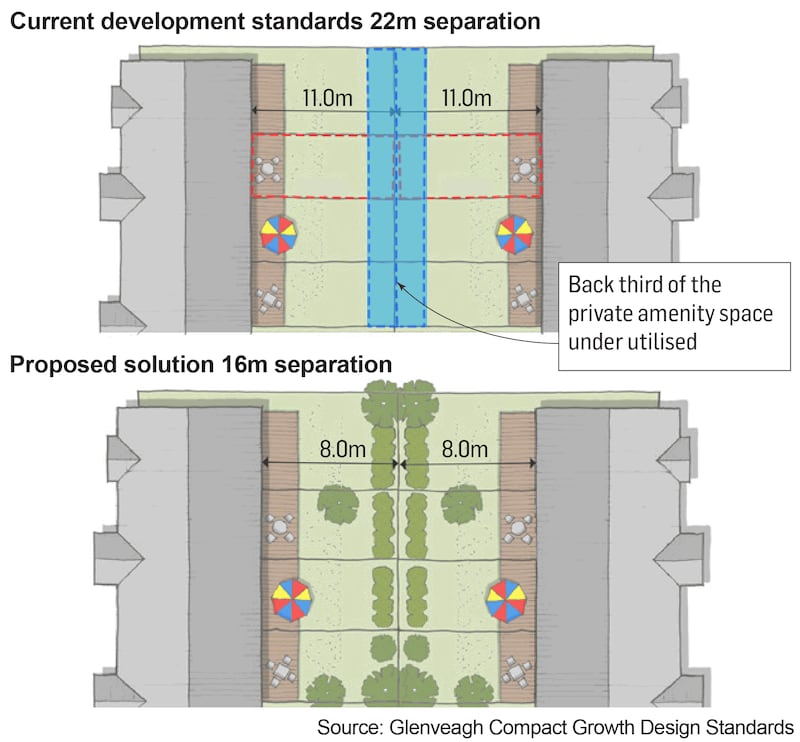Smaller gardens, a dramatic reduction of apartments and more tightly built streets is the “game-changer” blueprint for solving Ireland’s housing crisis, Minister for Housing Darragh O’Brien has been told.
Glenveagh Properties, one of the largest homebuilders in the State, has presented a plan to the Minister for overhauling existing regulations to allow developers shave more than a quarter off the distance between the rears of houses.
An existing 22m guideline from back door to back door dates to the 1900s, when it was needed to allow for outdoor toilets, solid fuel storage and some vegetable growing, the developer told Mr O’Brien.
It is urging a reduction to 16m as part of a master plan for more “low rise, high density” developments in mainly suburban areas around the country, which it claims would be the “biggest game-changer in house-building in Ireland”.
READ MORE

In its report, Compact Growth Design Standards, Glenveagh cites “focus groups” saying the back third of gardens are generally “dead space” or “under-utilised”.
The company also says there is no demand for apartments outside Dublin’s M50 and limited demand inside the capital’s busiest ring road and that the cost of building apartments outweighs the benefits.
“Apartment living is still required in city centres,” Glenveagh chief executive Stephen Garvey told The Irish Times.
“But when you look at suburban housing, or, say, some of the bigger towns outside of Dublin city — an apartment costing €450,000 to build in one of these towns? Who would be the buyer for it and who can afford it?”
“It is not the cost of land, it is the cost of apartments when we could be building houses that is the main problem.”
Mr Garvey admits his plan, drawn up after looking at international comparisons on building standards, particularly in the UK, is “not the whole solution” but insists “we would be a long way from here if it was adopted”.












